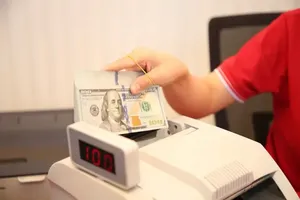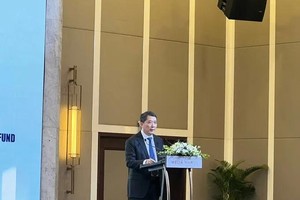
Because of negative credit growth and excess liquidity, the State Bank of Vietnam has decided to use the bill channel to net withdraw money from the market in order to reduce the pressure on exchange rate speculation. In March 2024, the Vietnam State Bank adopted net withdrawal for more than VND170 trillion (US$6.81 billion) via this method.
Despite that act, deposit interest rates among banks in Vietnam are still rather low. Commercial banks have been trying to push cheap capital into the market to stimulate credit growth.
For instance, Sacombank is allocating VND10 trillion ($400.8 million) for short-term loans for manufacturing and trading purposes with an interest rate of only 3 percent a year. Agribank has VND50 trillion ($2 billion) also for short-term loans of the same purposes with an interest rate of 3-4 percent a year. SHB has just reduced its interest rate for medium and long-term loans to 5.79 percent a year for individuals and 5.8 percent a year for businesses.
Thanks to those efforts, until March 25, the national credit growth was about VND13,600 trillion ($545 billion), a rise of 0.26 percent compared to the end of 2023. Sadly, the credit growths of several major commercial banks are still negative.
President Phan Duc Tu of BIDV’s Board of Directors informed that in the first two months of this year, his bank has already disbursed more than VND470 trillion ($18.84 billion) even though its outstanding debt has decreased by over 1 percent as opposed to the end of last year.
President Pham Duc An of Agribank’s Board of Directors reported that the gap between loan and debt collection after two months dropped by VND2 trillion ($80.16 million) year on year. Vietcombank’s credit growth rate in January 2024 reduced by VND30 trillion ($1.2 billion) or 2.3 percent compared to the end of 2023.
This comes from seasonal factors as well as weak capital absorption capacities of businesses in the country.
On the other hand, reports by the HCMC Business Association (HUBA) reveal that many small and medium-sized enterprises are not able to access credit capital even though banks are offering various preferential policies on loan interest rates while trying to maintain debt groups.
As these reports show that 41 percent of operating companies no longer have legal collateral to borrow money, HUBA proposed an increase of loan amounts on collateral and permission to receive contractual loans with future assets and asset rights. In addition, businesses have suggested that banks should use less strict loan conditions or criteria so that they could approach necessary capital.
Deputy Director Nguyen Duc Lenh of the State Bank of Vietnam – HCMC Branch commented that credit organizations in the city have been actively implementing several solutions for credit growth along with prompt support to enterprises.
The capital supply – demand connection activities held lately here have indeed improved the situation. About VND52 trillion ($2.08 billion) out of the credit package of VND509 trillion ($20.4 billion) registered by 17 commercial banks in the program ‘Connecting Banks – Businesses 2024’ was successfully distributed to nearly 15,400 clients, accounting for 11 percent of this package.
Owner of Thanh Danh Rice-paper Production Co. (sited in Cu Chi District of HCMC) shared that thanks to the above program, she timely loaned VND15 billion ($600,000) to upgrade her production system to reach an output of 6 tonnes a day for both domestic and foreign consumption.
Similarly, Director of Saigon Rice Warehouse One-member Co. Ltd. happily said that thanks to the meaningful program above, companies like his organizations are confident talking with banks and approach necessary capital to overcome their financial obstacles and successfully expand their business activities.
Dr. Truong Van Phuoc, former Acting Chairman of the National Financial Supervisory Commission, stated that such low deposit interest rates are a valuable chance for banks to decrease loan interest rates for stronger credit growth, along with the global economic recovery. A low loan interest rate and a high demand for capital to serve manufacturing and trading activities will obviously aid in the increase in the credit growth rate this year to reach the target of 14-15 percent from the third quarter.
















)

)





